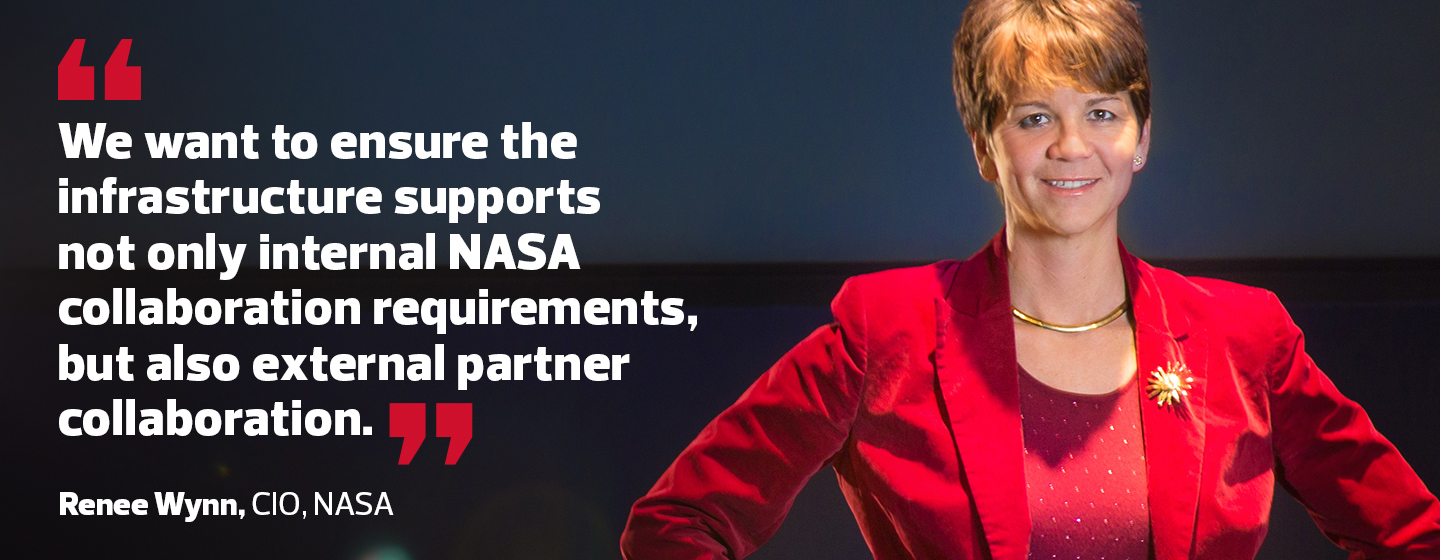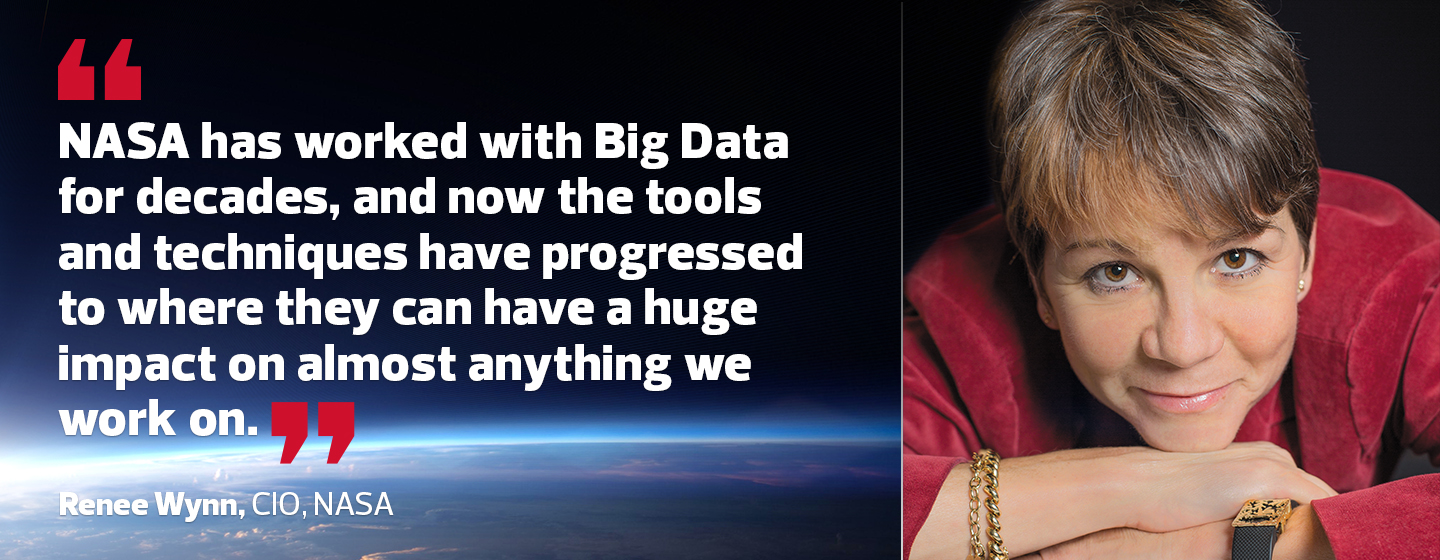NASA CIO Renee Wynn Pushes for Cloud Infrastructure, Collaboration Tools
As the CIO of NASA, Renee Wynn has one of the coolest — and most complex — jobs in federal IT.
Wynn joined the space agency last summer after 20 years at the Environmental Protection Agency. Her mission: consolidate IT services, leverage cloud platforms and provide technology that will enable some of the government’s brightest minds to lift off.
Wynn spoke with FedTech Managing Editor David Stegon about her transition to NASA, her goals for the agency and how Platform-as-a-Service will be a key strategy moving forward.
FEDTECH: There is a definite “cool factor” to NASA. Have you been able to tap into that, either with the work you do or in recruiting younger workers to join the IT department?
Wynn: NASA’s cool factor was one of the reasons I was attracted to the agency. Its mission and consistent accomplishments over the past 50 years have been and continue to be phenomenal.
In IT, we have an aging workforce, with the average age over 50. We make a concerted effort to bring in younger staff with most of those positions at NASA centers.
We do use a number of programs — such as co-op, intern and Presidential Innovation Fellows programs — to bring in young talent.
I do worry about providing NASA employees with technology. We serve a multigenerational, highly skilled workforce, and must deliver data and innovative technology that truly improves productivity and enhances the mission.

FEDTECH: With large facilities spanning the country, NASA faces an interesting technology challenge. How can the centers work better together?
Wynn: We are constantly looking for the most secure, cost-effective and supportable solutions that can work across NASA Centers and Mission Directorates. NASA’s facility footprint includes nine space flight centers, a Federally Funded Research and Development Center and several support sites such as the Wallops Flight Facility.
Because of NASA’s mission, secure collaboration requirements are critical. NASA is currently transforming its communications and network infrastructure to optimize operations and remove existing barriers to collaboration.
This transformation effort includes centrally managing a number of network functions and standardizing network services so that, no matter what center you are working at, a baseline level of service is provided. My office is also implementing an architecture that will provide employees with a core suite of collaborative tools for video, instant messaging and presence, web collaboration, unified messaging and telephony.
FEDTECH: One of your focuses has been enterprise planning. What changes do you see coming to NASA’s IT infrastructure going forward?
Wynn: One of NASA’s IT tenets is “enterprise first,” but with that said, the goal is to make sure our enterprise infrastructure properly supports the mission at all times. We are strengthening our enterprise architecture to directly tie the business of NASA to technology and use that to drive business decisions.
I see our infrastructure leveraging cloud technologies more, where appropriate, along with integrating cybersecurity into infrastructure services early in the formulation stage, rather than as an afterthought. We are focusing on data and asset protection, and are positioning for a device-agnostic environment. We also will leverage service models for both internally and commercially developed services.
We want to ensure the infrastructure supports not only internal NASA collaboration requirements, but also external partner collaboration.
FEDTECH: You spent more than 20 years at EPA before joining NASA. From a technology standpoint, how are the two agencies alike? How are they different?
Wynn: Both agencies use similar technologies for mission support activities and are moving toward cloud services at various levels with Platform-, Infrastructure- and Software-as-a-Service. Both agencies also face very similar cybersecurity challenges in addressing metrics for FISMA and the recent Office of Management and Budget–mandated cyber sprint.
As for differences, NASA and EPA have clearly different missions, and the composition of the workforce and associated required technology varies significantly. For example, NASA has a substantial amount of IT to support satellite development, human space flight for the International Space Station and future deep space missions.

FEDTECH: Do you have any pet projects that you are working on now or that you would like to tackle in the future?
Wynn: The Internet of Things and data management are big.
We set up an IoT lab at Johnson Space Center to explore the platform and expand IoT networking to the agency, and also create visualizations and infographics that explain the technology’s value to end users.
Data management, including Big Data, is another growth area. NASA has worked with Big Data for decades, and now the tools and techniques have progressed to where they can have a huge impact on almost anything we work on.









